Volume 3
Monographs in Mathematical Economics
Editor-in-Chief
Toru Maruyama
Professor Emeritus, Keio University, Tokyo, Japan
Series Editors
Shigeo Kusuoka
Graduate School of Mathematical Sciences, The University of Tokyo, Tokyo, Japan
Jean-Michel Grandmont
CREST-CNRS, Malakoff CX, France
R. Tyrrell Rockafellar
Dept. Mathematics, University of Washington, Seattle, WA, USA
More information about this series at http://www.springer.com/series/13278 This series, consisting of research monographs and advanced textbooks for graduate students, is designed to bring together mathematicians interested in obtaining challenging new stimuli from economic theories and economists seeking effective mathematical tools for their research.
The scope of the series includes but is not limited to:
Economic theories in various fields based on rigorous mathematical reasoning
Mathematical methods (e.g., analysis, algebra, geometry, probability) motivated by economic theories
Mathematical results of potential relevance to economic theory
Historical study of mathematical economics
Comparable, existing monographs series are mainly organized from the viewpoint of users of mathematics, and are thus of limited interest to mathematicians. This series in contrast aims at genuine interaction between economists and mathematicians.
Most economic phenomena are described by (1) optimizing behaviors of agents (consumers, firms, governments, etc.) and (2) equilibria generated through the interactions of these agents. Consequently, the most basic mathematical subjects for economics fall into two categories:
Optimization theory, static and dynamic. Basic linear / nonlinear programming, calculus of variations, optimal control, dynamic programming etc. provide key mathematical tools. Modern developments in convex analysis, nonlinear functional analysis, set-valued analysis, and non-smooth analysis form indispensable foundations.
Equilibrium theory. Existence in finite- / infinite-dimensional settings, characterization, computational algorithms, dynamic adjustment processes, correspondence with economic structures.
Some fixed-point theorems and variational inequalities were created to solve the existence problem of equilibria. The stability theory and the viability theory of differential equations play important roles in the dynamic aspects of the equilibrium theory. Further, differential topology is a basic tool for the geometric analysis of equilibrium manifolds.
Economic phenomena significant in the real world often have a dynamic character. For instance, business cycles and movements of asset prices are governed by dynamic laws expressed in terms of differential or difference equations. Nonlinear analysis, harmonic analysis, and stochastic calculus play significant roles in solving dynamic economic problems. Econometric methods, including time series analysis and forecasting, also require sophisticated mathematical tools. Finally, significant developments in game theory and interaction with mathematical logic should be mentioned.
All of these topics and phenomena come within the scope of this series, aimed at cooperation between economists and mathematicians and the development of their respective disciplines.
Shigeo Kusuoka
Stochastic Analysis
1st ed. 2020
Shigeo Kusuoka
Graduate School of Mathematical Sciences, The University of Tokyo, Tokyo, Japan
ISSN 2364-8279 e-ISSN 2364-8287
Monographs in Mathematical Economics
ISBN 978-981-15-8863-1 e-ISBN 978-981-15-8864-8
https://doi.org/10.1007/978-981-15-8864-8
Springer Nature Singapore Pte Ltd. 2020
This work is subject to copyright. All rights are reserved by the Publisher, whether the whole or part of the material is concerned, specifically the rights of translation, reprinting, reuse of illustrations, recitation, broadcasting, reproduction on microfilms or in any other physical way, and transmission or information storage and retrieval, electronic adaptation, computer software, or by similar or dissimilar methodology now known or hereafter developed.
The use of general descriptive names, registered names, trademarks, service marks, etc. in this publication does not imply, even in the absence of a specific statement, that such names are exempt from the relevant protective laws and regulations and therefore free for general use.
The publisher, the authors and the editors are safe to assume that the advice and information in this book are believed to be true and accurate at the date of publication. Neither the publisher nor the authors or the editors give a warranty, expressed or implied, with respect to the material contained herein or for any errors or omissions that may have been made. The publisher remains neutral with regard to jurisdictional claims in published maps and institutional affiliations.
This Springer imprint is published by the registered company Springer Nature Singapore Pte Ltd.
The registered company address is: 152 Beach Road, #21-01/04 Gateway East, Singapore 189721, Singapore
To Hiroko
Preface
Martingale theory is now regarded as a foundation of the theory of stochastic processes. It was created essentially by Doob [2]. He refined Kolmogorovs idea on summation of independent random variables and discovered various kinds of inequalities in martingale theory. He also answered the question concerning in what case one can regard a stochastic process as a continuous process.
Martingale theory got connected with stochastic integrals and stochastic differential equations of It [5], and made great progress in the 1970s. In particular, the French school established a deep theory including discontinuous martingales. However, the theory of continuous martingales is most important for applications. The term Stochastic analysis is often used for the theory of continuous martingales, particularly in Japan.
There are various kinds of textbooks for stochastic analysis. However, from a viewpoint of applications (especially to finance) the content of these textbooks is either insufficient or overlong. I try to discuss stochastic analysis concisely and rigorously without reducing proofs. I try to use only elementary knowledge in functional analysis and to discuss almost all results in an  framework. For example, the DoobMeyer decomposition theorem concerning submartingales is proved only in the case that submartingales are square integrable. Linear algebra and measure theory are necessary as preliminary knowledge. However, measure theory used in this book is summarized in Chap..
framework. For example, the DoobMeyer decomposition theorem concerning submartingales is proved only in the case that submartingales are square integrable. Linear algebra and measure theory are necessary as preliminary knowledge. However, measure theory used in this book is summarized in Chap..
Acknowledgements
The contents of this book are based on courses of lectures on stochastic analysis I gave in The University of Tokyo. I thank students who attended and listened to my lectures patiently. Also, I would also like to thank the anonymous referees who gave me valuable advices for improving the manuscript. Finally, I express my gratitude to Toru Maruyama for encouraging me for a long time to publish this book.

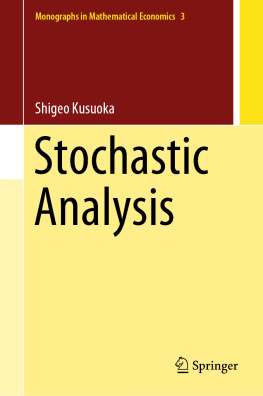

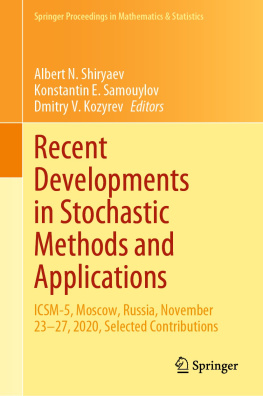
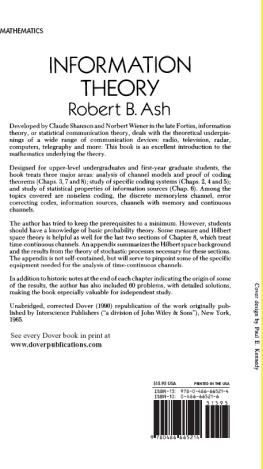
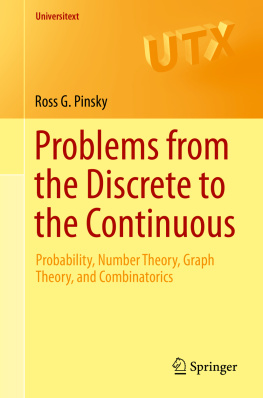
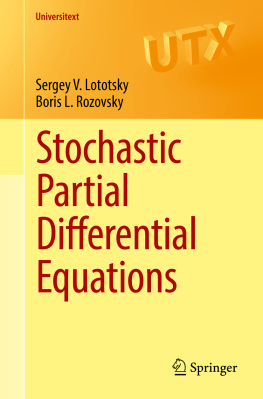
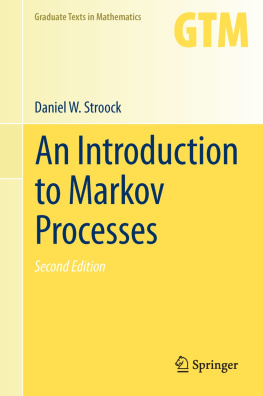

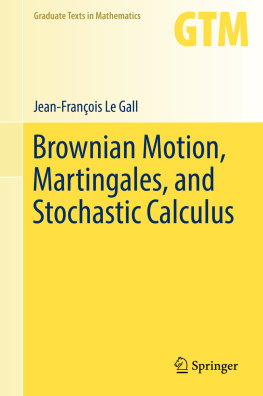

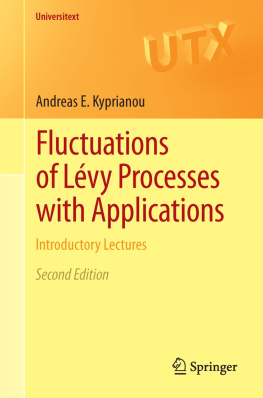
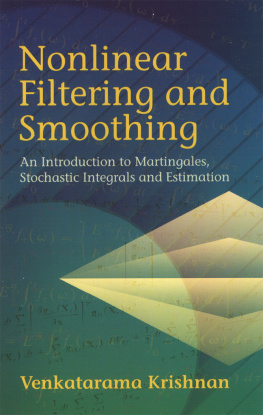



 framework. For example, the DoobMeyer decomposition theorem concerning submartingales is proved only in the case that submartingales are square integrable. Linear algebra and measure theory are necessary as preliminary knowledge. However, measure theory used in this book is summarized in Chap..
framework. For example, the DoobMeyer decomposition theorem concerning submartingales is proved only in the case that submartingales are square integrable. Linear algebra and measure theory are necessary as preliminary knowledge. However, measure theory used in this book is summarized in Chap..